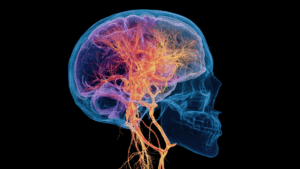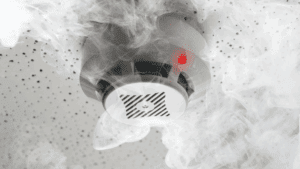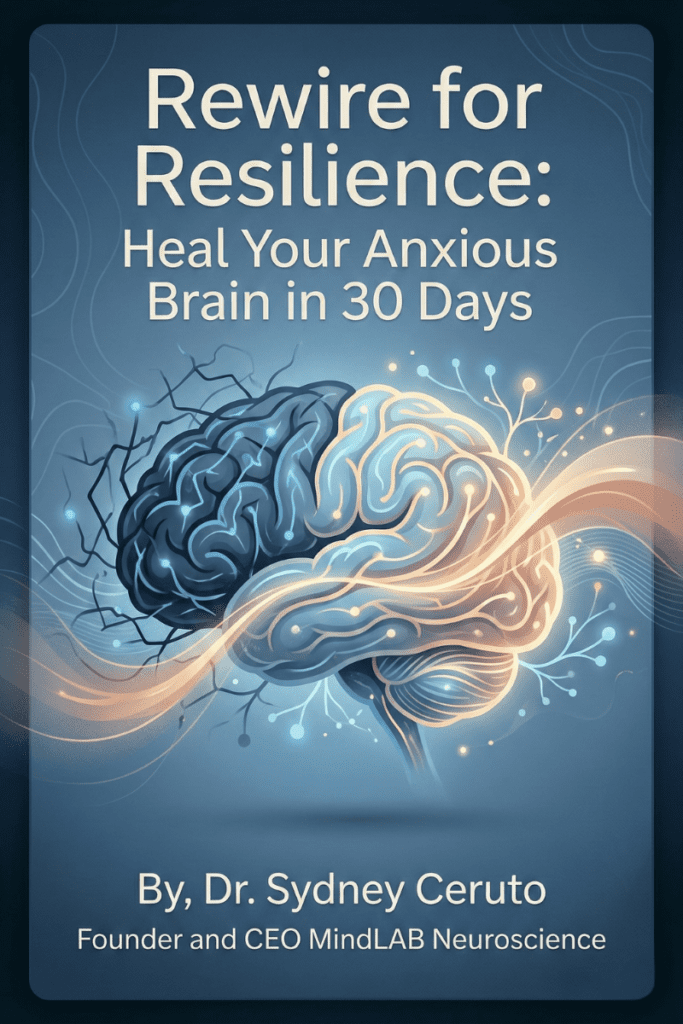Wired for Repetition: The Core of Compulsivity
Beneath the surface of daily life, almost everyone encounters tension between intention and urge—a drive toward behaviors repeated beyond conscious preference. The neuroscience of compulsivity shows that this tendency springs not from weakness, but from robust survival mechanisms encoded in ancient brain networks. The urge to binge-watch a favorite show, rehash awkward conversations, or reflexively check a phone is not only widespread but rooted in the very way the mind is constructed to seek comfort and predictability. Leading research indicates that humans have evolved to favor predictability and pattern, which historically minimized risk, optimized energy use, and increased the odds of survival in changing environments.
This is why so many “bad habits” feel good in the moment and so hard to break; these loops provide short-term relief, even at a long-term cost. In fact, the neuroscience of compulsivity makes clear that everyone is wired to struggle with repetition—what matters is how one becomes aware and constructs a new pathway forward.
Biological Roots and Brain Pathways

Recent scientific advances have uncovered striking details about the hardware of human habits. In the neuroscience of compulsivity, structures such as the basal ganglia are responsible for storing and automating repeated actions. At the same time, the prefrontal cortex attempts to regulate and suppress unnecessary routines—but this balance is easily disrupted by stress or exhaustion. Advances in neural loops often associated with reward and reinforcement; specifically, dopamine surges encourage “just one more” even in the face of negative consequences.
Modern biomarker studies now show that individuals who are prone to habitual, rigid behaviors often have increased brain wave activity (notably in the alpha and delta bands) in networks linked with compulsive actions. In specific clinical populations, disruptions in communication between the striatum, thalamus, and cortex are so pronounced that targeted neuromodulation techniques are being developed to help restore balance. The neuroscience of compulsivity offers insight and hope: while the drive for repetition is powerful, brain circuits can adapt and change across a lifetime.
The Neurochemistry of Urge: Dopamine, Serotonin, and the Compulsive Brain
Behind every relentless urge, the neuroscience of compulsivity uncovers an intricate dance of brain chemicals working silently but powerfully. Dopamine—often referred to as the “motivation molecule”—is central to this process, firing up reward circuits and making anticipated actions feel irresistible. When a trigger or cue is encountered, dopamine surges in key pathways, such as the mesolimbic system, creating an intense drive to act, whether that means refreshing an inbox, reaching for a treat, or repeating a specific phrase. The neuroscience of compulsivity reveals that this surge isn’t always logical; the brain learns to crave the relief or pleasure associated with repetition, even when the behavior no longer serves us.
Serotonin, another crucial player, works more quietly by moderating mood and impulse control. When serotonin levels are balanced, it becomes easier to resist compulsive urges. However, stress, poor sleep, a disrupted circadian rhythm, or even a depleted gut microbiome can reduce serotonin’s regulatory effect, making compulsivity more prominent and those “itches” harder to manage. The neuroscience of compulsivity now recognizes how closely the brain’s chemical landscape is tied to daily habits—lack of movement, erratic eating patterns, or insufficient sunlight can tip neurochemistry toward increased vulnerability.
Exciting new research even points to the gut-brain axis, where the health of intestinal flora influences both dopamine and serotonin levels, providing fresh hope for people seeking holistic ways to regulate compulsivity. The neuroscience of compulsivity suggests that supporting brain chemistry through targeted lifestyle choices—consistent sleep, mindful eating, regular physical activity, and social connection—can help recalibrate urges before they become overwhelming. By learning not just to fight, but to understand and support our brain’s chemical balance, anyone can reclaim power over their routines, finding harmony between ancient instincts and modern self-mastery.
Evolution’s Logic: The Adaptive Side of Compulsive Drives
Anthropologists and evolutionary psychologists note that the earliest humans depended on routine and predictability for order and safety. The neuroscience of compulsivity reveals that those ancestors who adhered to proven foraging paths or developed rituals around hunting and weather prediction had stronger group cohesion and better odds of survival. Repetition was life-saving: rituals helped reduce collective anxiety, reinforced memory, and created patterns around food gathering or seasonal migrations. In today’s world, these same adaptive circuits compel individuals to repeat behaviors ranging from nightly security checks to digital habits like scrolling for updates—a modern adaptation of ancestral vigilance for threats or resources.
Fascinatingly, evolutionary thinkers explain that what we label today as compulsivity may be a vestige of the human mind’s ancient quest to control the unpredictable. Small, repeated behaviors helped sharpen early humans’ sense of cause and effect, preparing them to anticipate danger or opportunity based on subtle environmental cues. In some cultures, rituals and repetitive acts were believed to influence weather, ward off harm, or bring fertility—a testament to the deep-seated drive for agency hardwired into our brain’s structure. Recent comparative anthropology reveals that not only humans, but also great apes, certain birds, and mammals, exhibit ritualized, repeated behaviors, suggesting that the compulsion to find order in chaos runs deep across the animal kingdom.
Some evolutionary social scientists propose that compulsivity and ritualization also served a social purpose: as tribal groups became larger and human communication more advanced, shared repetitive practices helped enforce cooperation, foster trust, and synchronize emotions within the group. These same neural blueprints may be why synchronized acts—such as singing, dancing, or repetitive chanting—still elicit feelings of unity and safety in modern gatherings. In the face of extreme uncertainty, evolutionary biology suggests, compulsive tendencies are not a flaw but a deeply ingrained urge to restore predictability, increase perceived control, and manage the stress of ambiguity.
The neuroscientific view transforms compulsivity from a personal flaw into an echo of what once meant the difference between life and death. Stress, uncertainty, or rapid change can reawaken these deep systems, making compulsion feel automatic and difficult to control. Modern neuroscience and anthropology suggest we can learn from this evolutionary underpinning: by understanding and embracing the origins of our compulsive drives, we gain compassion for our own habits and empower ourselves to make thoughtful, adaptive changes that honor our heritage—without getting trapped by it.
Anthropology: Habits, Rituals, and Cultural Loops
Across cultures, rituals serve as a form of group glue—ways to bind communities and buffer individuals against chaos. The neuroscience of compulsivity demonstrates that synchronized activities—such as communal dancing, feasting, or shared greetings—activate pleasure centers in the brain, encouraging repetition and a sense of group belonging. Anthropologists have observed that such rituals not only structure the year and mark critical transitions, but also create predictability when external forces are unstable. Today, these neural systems are recruited for everything from the universal morning coffee routine to religious observances.
Interestingly, maladaptive compulsions—those repetitive acts that serve no functional or social purpose—may be the brain’s attempt to recreate the comfort once found in ancient rituals. The neuroscience of compulsivity reveals that context matters: even “benign” habits become problematic if they isolate rather than connect. Recognizing this cultural dimension invites new, more supportive conversations about breaking cycles and healthier ones.
Triggers and Temptations: What Sparks a Compulsive Cycle

Nothing about compulsivity is random, and the neuroscience of compulsivity unpacks exactly why specific cues seem to control our behaviors before conscious thought even begins. The brain encodes triggers—such as specific sounds, scents, colors, or emotions—into powerful cues through a process known as associative learning. Over time, these cues become hardwired into neural pathways, so just hearing a notification “ding,” the smell of fresh bread, or even experiencing a particular kind of stress can instantly bring old habits to the surface.
The neuroscience of compulsivity reveals that these triggers activate key reward circuits, particularly in regions such as the striatum and prefrontal cortex, triggering a surge of motivation that can overwhelm self-restraint in milliseconds. Internal cues such as boredom, fatigue, or emotional discomfort can be just as powerful as external ones, weaving together a feedback loop that perpetuates compulsive actions. New research highlights that, for some, genetic differences can make these neural connections especially “sticky,” explaining why willpower alone rarely breaks the cycle.
What’s fascinating is that positive routines—like morning exercise or making tea—light up the same neural circuits as compulsive behaviors that cause distress. This underscores a key lesson from the neuroscience of compulsivity: the difference between habit and compulsion isn’t the path, but the purpose and awareness behind it. If a routine brings satisfaction, energy, or meaningful structure, it supports growth; but if it drives anxiety, avoidance, or shame, it’s more likely to become compulsive.
Modern neuroscience reveals that patterns of triggers and compulsive responses are managed by a dynamic balance between the brain’s “GO” and “STOP” systems. The “GO” circuits (like the dorsolateral prefrontal cortex and anterior cingulate) accelerate responses to cues, while the “STOP” systems (like the orbitofrontal cortex and ventromedial prefrontal cortex) keep impulses in check. When stress, sleep loss, or high emotion weakens the “STOP” networks, even well-intentioned routines can slide into compulsivity.
Understanding the neuroscience of compulsivity, therefore, is not about banishing triggers but learning to anticipate and reframe them. Families, individuals, and professionals who appreciate these mechanisms can foster healthy patterns in daily life by designing rituals that energize rather than exhaust, introducing creative “pattern interrupts,” and responding to the earliest signs of a trigger with curiosity rather than criticism. When destructive cycles are addressed with empathy, insight, and brain-aware intervention, the path to balance becomes much clearer and more attainable.
Adolescence and the Growing Brain: Compulsivity in Youth
Adolescents live at the crossroads of intense brain change. In the neuroscience of compulsivity, the teenage years are the peak period for craving novelty, social status, and immediate gratification, while impulse control and long-term thinking lag. Neural networks governing self-control, particularly in the prefrontal cortex, do not fully mature until young adulthood, whereas dopamine-sensitive circuits in the reward system develop much earlier. This biological mismatch explains why teens can be vulnerable to compulsive patterns—whether it’s endless gaming, social media loops, or emotional outbursts. Modern neuroscience confirms that guidance and gentle limits, rather than harsh judgment, help adolescents develop self-regulation gradually.
Encouraging meaningful hobbies, supporting healthy sleep routines, and modeling pauses before action can leverage neuroplasticity, providing the new blueprints for managing urges. Open conversations about the neuroscience of compulsivity empower young people to view their experiences as a regular part of growth—and to shape their future with informed, compassionate guidance.
Modern Life: The Age of Digital Compulsivity
Technology has turbo-charged the ancient circuits underlying compulsivity. Always-on devices, social platforms engineered for “likes,” and infinite streams of novelty hijack the brain’s dopamine forecast system. The neuroscience of compulsivity explains why a single notification can create a powerful itch, and why digital habits become so ingrained. Social validation feels tangible, and every scroll or tap becomes a micro-reward. This creates a feedback loop—the more we check, the more the brain expects a reward. The neuroscience of compulsivity is crucial for understanding modern patterns of distraction, procrastination, and screen addiction. Digital anthropology reveals how entire cultures are restructuring their rituals, sleep patterns, and communication in response to compulsive digital engagement, with far-reaching implications for well-being and productivity.
Today, digital compulsivity also thrives because technology offers instant relief from discomfort or boredom, with the brain labeling these coping behaviors as “rewarding” despite their long-term costs. Recent research shows that compulsivity is tightly linked not only to dopamine spikes but also to what scientists call “cognitive rigidity”—when the brain’s wiring makes it hard to switch off or detach from online activity, especially under stress. As a result, digital compulsivity can lead to sleep disruption, snacking at odd hours, and even lower self-esteem due to constant comparison or “doomscrolling” through harmful content.
The neuroscience of compulsivity clarifies that these patterns are not character flaws, but rather the result of carefully engineered digital environments that exploit reward drive and innate social needs. This pushes boundaries beyond personal habits into public health, as the constant pull of screens can erode executive function, memory, and impulse control, even in the most disciplined individuals. More subtly, yet equally significantly, our sense of self and emotional stability can erode when “likes” and notifications dictate our mood, worth, or productivity.
Responding to the neuroscience of compulsivity in digital life means redesigning routines and spaces to protect attention, encourage deeper offline connections, and respect the brain’s natural rhythm for focus and rest. It calls for honest conversations about boundary-setting, digital detox periods, and how purposeful tech use—not just avoidance—can help reclaim the creative and connective power that technology originally promised.
The Shadow Side: Shame, Secrecy, and Internal Conflict
For many, the neuroscience of compulsivity is tangled with shame and secrecy. Society bombards us with messages equating self-control with virtue, leaving those stuck in compulsive patterns feeling broken or weak. Yet, neuroscience clearly shows that these loops are not moral failings, but rather natural biological processes—sometimes intensified by trauma, genetics, or chronic stress. Recent brain research reveals that shame and embarrassment actually activate areas tied to social pain and inhibition, like the anterior insula and cingulate cortex, which can make compulsive urges physically and emotionally overwhelming. Many people cope by hiding their struggles, leading to increased isolation and guilt—paradoxically fueling the very cycles they wish to escape.
Self-conscious emotions, such as shame, rather than prompting healthy change, often drive people deeper into secrecy and habit, making it even harder for them to reach out for support. Feelings of shame can actually feed the cycle, driving behaviors underground and making support or self-reflection seem even more out of reach. Unraveling the neuroscience of compulsivity allows for understanding: every urge, no matter how troubling, is a signal calling for curiosity rather than judgment. Recognizing that these emotions have biological roots—and that release is possible—can become a powerful turning point for change.
The Neuroplastic Brain: Can Compulsivity Really Change?
Neuroplasticity is the beacon of hope in compulsivity science. The neuroscience of compulsivity teaches that while the brain is wired for repetition, it is also capable of profound change. Advances in imaging confirm that even short, intentional pauses can begin to weaken old neural patterns and strengthen healthier ones. Every time someone interrupts a compulsion, reflects before acting, or practices a new behavior, new neural pathways are strengthened. Evidence from habit-reversal training and mindfulness demonstrates that the brain, regardless of age, can adapt in response to new routines, emotional attitudes, and positive reinforcement.
At first, change is slow and effortful, with old habit circuits pushing back. But through focused attention, repetition, and emotional safety, the brain can lay down tracks for healthier, more adaptive routines. Tiny successes in resisting compulsivity are celebrated by the brain’s reward system, helping to motivate further change. This scientific reality empowers people to move from hopelessness to possibility, reframing recovery as a process of rewiring—one small step at a time. Ultimately, understanding the neuroscience of compulsivity invites every person to become an active participant in their own growth story.
Sociology of Compulsivity: Connection, Comparison, and Social Pressure
Compulsivity doesn’t happen in isolation; it flourishes inside the messy reality of social comparison and belonging. The neuroscience of compulsivity intersects with societal triggers—social media popularity contests, workplace performance demands, parental expectations—that amplify urgency or anxiety. Modern research highlights that social rejection or comparison can activate the same neural circuits involved in physical pain, making compulsive urges to fit in or stand out especially difficult to resist. Cultural norms shape which compulsions are celebrated as “discipline” and which are stigmatized. In some settings, compulsive work or perfectionism is praised, while other repetitive behaviors are seen as signs of weakness.
Understanding the neuroscience of compulsivity means recognizing how social forces drive specific behaviors, and how people can protect their boundaries, curate healthier environments, and challenge pressures that keep old cycles alive. By naming these influences, individuals and communities can
Relatability: Everyday Stories of Compulsivity

Compulsivity isn’t always dramatic or immediately visible. The neuroscience of compulsivity shows up in the myriad small rituals and routines that pepper daily life, each with a unique emotional undertone. For many, the neuroscience of compulsivity reveals itself in the parent who double-checks a locked door each night, unable to rest until certainty is secured. The neuroscience of compulsivity can drive an executive to replay every meeting, meticulously analyzing for errors or social missteps that might otherwise go unnoticed.
Artists and creatives may experience the neuroscience of compulsivity as an inability to put down the brush or endlessly revise the final draft, driven by a fear of imperfection. Within families, the neuroscience of compulsivity often manifests as rituals surrounding cleanliness or safety, such as repeated handwashing, arranging objects in a particular order, or retracing steps to ensure nothing is left behind.
Every day compulsive behaviors can also include:
- Rechecking emails and texts for possible mistakes over and over before hitting “send”
- Counting steps, cracks in the pavement, or items, are compelled by the neuroscience of compulsivity
- Ritualistically arranging household items until they look or feel “right”
- Engaging in compulsive shopping, scrolling social media, or even talking non-stop in situations where silence feels stressful
- Hoarding items or information, convinced that throwing away could lead to regret or loss.
- Following strict, self-imposed rules or routines, feeling unable to deviate for fear of anxiety or disorder
- Seeking reassurance from loved ones repeatedly—even when reassured moments before
The neuroscience of compulsivity helps normalize these wide-ranging experiences, revealing that the quest for certainty, resolution, or relief from discomfort is a universal human trait. When we start to talk honestly about these “minor” compulsions—without shame or exaggeration—the stigma begins to melt, paving the way for practical strategies and heartfelt empathy. Personal development professionals and coaches who utilize the neuroscience of compulsivity help their clients recognize how everyday quirks might point to deeper, ancient brain patterns, and how these can be transformed into opportunities for growth rather than sources of guilt. Over time, applying the neuroscience of compulsivity fosters self-awareness, empowerment, and a sense of community among those who once believed they were struggling alone.
My Own Dopamine Loop: The Compulsivity of “Retail Therapy”
Like so many others navigating today’s hyper-connected world, I once struggled with a form of compulsivity that crept into life subtly—online shopping when I felt lonely, restless, or just needed a “pick-me-up.” The neuroscience of compulsivity reveals that this urge isn’t about weakness; it’s the brain’s instinct for reward in overdrive. Whenever I found myself late at night scrolling through new gadgets, trending styles, or one-click convenience, it wasn’t just about the purchase. Each “Add to Cart” and confirmation email provided a quick burst of dopamine—a feeling of novelty, control, and fleeting excitement that briefly distracted from boredom or isolation.
Of course, the neuroscience of compulsivity also explains that this cycle, left unchecked, becomes automatic quickly. I noticed the habit getting stronger alongside stress or during quiet weekends, when online deals and targeted ads became almost impossible to resist. Even knowing that most purchases weren’t needed, just seeing the “order confirmed” screen seemed to fill a gap. But as the neuroscience of compulsivity teaches us, every repeated loop strengthens brain pathways, making each urge even more challenging to question or break. The real wake-up call came when I realized I was shopping out of habit—not for joy, but for relief from uncomfortable feelings that hadn’t been named or faced.
Facing this pattern with honesty and neuroscience-driven strategies—such as mindful pausing, emotion labeling, and setting planned digital boundaries—was transformative. I began to spot the early warning signs (fatigue, loneliness, those “just one click” moments) and redirect my energy into healthier rituals: reaching out to friends, journaling, or stepping outside for a reset. Over time, the shopping urge lost its grip, and genuine contentment became the new reward. The neuroscience of compulsivity became not just a field I taught, but a personal roadmap for resilience and authentic fulfillment.
Practical Strategies: Rewiring the Compulsive Brain
Harnessing the neuroscience of compulsivity means translating brain research into real, sustainable change—not just “trying harder” or relying on fleeting bursts of willpower. The neuroscience of compulsivity reveals that these strategies are effective because they target specific neural pathways responsible for generating urges, forming habits, and exercising self-control. Each approach is powerful both on its own and as part of a holistic plan. Here are seven highly effective, neuroscience-based strategies to manage compulsive behaviors and reshape your brain, habits, and life:
- Mindful Pausing: The neuroscience of compulsivity shows that even a three-second pause before acting can allow your prefrontal cortex to interrupt automatic behaviors, offering you the choice to respond rather than react. Practice pairing this with a deep breath and notice the urge arise—this minor disruption is the first building block toward change.
- Structured Routines: Stable, predictable routines keep the brain from defaulting into unwanted behavioral loops. The neuroscience of compulsivity affirms that creating morning rituals, setting scheduled “check-in” times, or planning regular breaks can redirect habitual energy toward positive outcomes and reduce the cognitive load that overwhelms willpower.
- Reward Substitution: Instead of fighting urges head-on, redirect them by choosing an immediate, healthy reward (such as taking a walk outside, stretching, or engaging in a creative activity). The neuroscience of compulsivity explains that new habits stick best when the brain receives a pleasurable payoff—train your neural circuits to anticipate new forms of satisfaction.
- Emotional Awareness and Labeling: Compulsive behaviors are often attempts to mask or avoid uncomfortable feelings. The neuroscience of compulsivity suggests that naming your emotion (“I feel tense,” “I notice anxiety,”) engages the brain’s self-regulation networks and reduces the drive for instant self-soothing.
- Planning for Triggers: Anticipate the moments or contexts when compulsive urges typically arise, and plan your response accordingly. The neuroscience of compulsivity highlights how actionable “if/then” plans (If I get the urge to check my phone when anxious, then I’ll do 10 slow breaths) can preemptively short-circuit autopilot behaviors.
- Accountability Support: Research in the neuroscience of compulsivity reveals that social connection and external feedback are crucial for achieving lasting change. Partner with a friend, coach, or online community to celebrate wins, catch setbacks, and share progress—knowing you’re not alone directly strengthens motivation and resilience.
- Self-Compassion and Reframing: The neuroscience of compulsivity demonstrates that every attempt counts, not just the successes. When you view slip-ups as valuable information rather than personal failures, your brain learns flexibility and grit. Remember, every slight pivot rewires your compulsivity circuit and brings you closer to mastery.
What makes these strategies revolutionary is how they use the core findings from the neuroscience of compulsivity: focusing on small actions, predictable rewards, mindful awareness, and social reinforcement together supercharge brain plasticity. Over time, these practices don’t just manage compulsive behaviors— they slowly transform the neural blueprints that generate habits, empowering you to reclaim agency, self-respect, and a calm, focused mind. By making the neuroscience of compulsivity the foundation of your self-improvement, you lay down pathways to deeper autonomy and genuine transformation that will serve you for a lifetime. Using these strategies regularly—each rooted in the neuroscience of compulsivity—empowers you to shift behaviors, retrain your brain, and build authentic self-control over time.
Personal Development in the Context of Compulsivity
Personal development guided by the neuroscience of compulsivity unlocks a wholly new experience of self-growth—one that is grounded in optimism, resilience, and actionable science. Rather than viewing compulsive patterns as lifelong battles, the neuroscience of compulsivity reframes them as dynamic pathways that are ripe for positive change. Neuroscience-driven coaching empowers individuals to recognize their natural strengths, transforming setbacks into sources of wisdom and fuel for growth. The journey isn’t about erasing who you are, but discovering how the brain’s natural adaptability can help you shape new routines, mindsets, and aspirations with confidence.
As people begin to celebrate progress, they quickly realize that celebrating each step, no matter how small, amplifies motivation and fosters a deep sense of accomplishment. The neuroscience of compulsivity shows that acknowledging these victories boosts dopamine and reinforces new, empowering habits at a biological level, making change more lasting and joyful. Supportive coaching environments cultivate self-compassion, encourage creative problem-solving, and demonstrate that hope is not a fleeting feeling but the engine of brain plasticity.
Most importantly, the neuroscience of compulsivity reveals that profound transformation often begins with simple acts, such as reaching out for support, trying a new habit, or forgiving yourself for a setback. Every day presents new opportunities to choose growth, resilience, and authentic fulfillment deliberately. By harnessing a brain-based, strengths-focused approach to personal development, you not only break free from compulsive habits but also uncover your innate capacity for happiness, connection, and thriving in every aspect of life.
The New Frontier: Compulsivity in the Future
As neuroscience and society evolve, understanding compulsivity will become even more critical—from designing technology that respects attention to nurturing resilience in the next generation. Advances in the neuroscience of compulsivity are already influencing the next wave of innovation, from ethically designed technology that intentionally minimizes digital triggers to schools and workplaces that prioritize attention, emotional regulation, and brain-friendly habits. The neuroscience of compulsivity encourages us to move beyond outdated myths about willpower, empowering people to view repetitive behaviors as opportunities for strategic rewiring and authentic empowerment.
In the coming years, neuroscience-driven coaching will play a central role for those who are ready to break free from unwanted habits and unlock their full potential. Coaches who deeply understand the neuroscience of compulsivity can help clients map their unique brain loops, decode triggers, and design personalized, actionable strategies that speak directly to how the brain works. Through neuroscience-informed dialogue, technology, and real-time feedback, individuals gain the support, insight, and accountability necessary for profound and sustainable transformation. The neuroscience of compulsivity means people are no longer alone in their struggle: even the most stubborn patterns can be addressed with science, compassion, and creative coaching.
Organizations and families will increasingly turn to neuroscience of compulsivity specialists to nurture resilient mindsets, train leaders in self-awareness, and foster whole-community wellness. This future isn’t just about overcoming challenges—it’s about harnessing the power of brain plasticity to drive innovation, foster deeper connections, and achieve meaningful personal growth. When you engage with the neuroscience of compulsivity through MindLab Neuroscience, you access not only the latest research, but a proven framework to turn insight into long-term change—for yourself and for those you lead.
With this science-backed, actionable roadmap, the neuroscience of compulsivity is transformed from a source of frustration into a strategic edge —a toolkit for self-mastery and a springboard for a more satisfying and impactful life. Taking the next step—whether you’re a professional, parent, creator, or leader—begins simply by reaching out to start the conversation and activate change. The future belongs to those who choose to be mindful architects of their own brains.
#neuroscienceofcompulsivity #compulsivity #brainscience #neuroplasticity #anthropology #evolution #coaching #habitchange #personaldevelopment #selfregulation #dopamine





